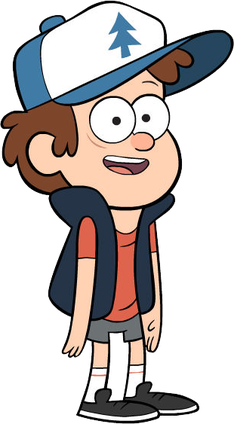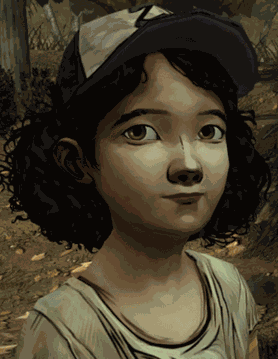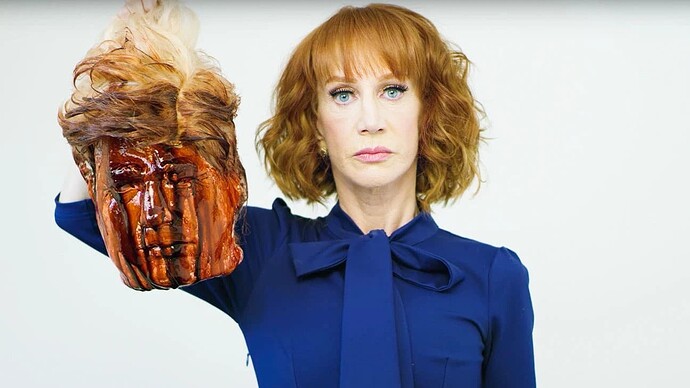I personally have a LOT of very mixed opinions when it comes to the subject of using a real-life reference for NSFW art. It’s a subject I struggle to come to any concrete answer on, and many whom I ask have their own opinions and admit they don’t have all the answers.
Now, it should be noted that (unless I am misunderstanding) this man had non-AI CSAM. Pure photographs of naked children that he had taken without their knowledge. I fully agree that this is immoral.
But let’s move away from this case and into hypotheticals. For a first example, let us take a duo of heavily stylized fictional characters who happen to be based on some real people: Dipper and Mabel Pines from “Gravity Falls”.


The Pines twins are unrealistically designed cartoon characters. However, they are loosely adapted from real people: the creator and his twin sister. Alex Hirsch based Gravity Falls on his own childhood experiences and interests. The main protagonists are based on himself and his actual family. A popular ship amongst some sects of the fandom is “Pinecest”. Three guesses to who the ship is referring to. IIRC, Alex has stated that he doesn’t want to tell anybody what they can or can’t do with his characters in their fanworks, but a ship indirectly based on himself and his own sister as children obviously skeeves him out.
Is hentai based on the Pines twins immoral because they’re loosely based on two real-life people? Said people having been vocally disgusted by those who ship them?
How about a character who’s less cartoony, but still stilized? Clementine from Telltale Games’ “The Walking Dead”.

The comic-inspired art style of Telltale’s adaptation is not going to be mistaken for reality. But the overall main protagonist of the series, Clementine, is physically based on a real little girl. Derek Sakai is the art director for this game, and he based Clem on his own daughter. If you couldn’t tell, Sakai is of Japanese decent. Clem, despite supposedly being African American, is often mistaken for East Asian. If you were to alter Clem’s design and make her look more realistic, she would prolly resemble the real Sakai’s daughter at that age.
Is it ethical to rip Clem’s model from the game and use it for porn animations when she wears the stylized face of a real child?
Speaking of video games, there’re many games now that use motion capture. Many actual child actors are brought in to do physical acting that is then made into an in-game model. Sarah from “The Last of Us”, Alice from “Detroit: Become Human”, etc. These are real people whose likenesses got converted into video game characters, characters whose models can be ripped from the game and used for NSFW purposes.
Because these are the digitized bodies of actual children, is this skirting a line far too close to reality? Is animating a realistic model comparable to deepfaking?
Even without 3D, many would still object to making sexual art of real child actors. 2D hentai that is clearly based on, say, young Emma Watson as Hermione Granger; the late Heather O’Rourke as Carol Anne Feeling; young Dafne Keen as X-23, etc. If it’s a stylized drawing that only barely resembles the real actors, should that get a pass? I recall an infamous porn artist making brutal rape porn of X-23. It was heavily stylized, but obviously based on how she appeared in the live-action movie “Logan”. Keen’s lawyers dropped the hammer HARD on this guy, scared him into stop making loli altogether even when based on fiction. Was it moral to stop him? Or should his freedom of expression been protected as it wasn’t a deepfake?
I feel like I’m dipping into philosophy at this point. Questions like this quite literally keep me up all night, obsessed with the morals and ethics of this gray area. I’ve heard opinions ranging from “all loli encourages the sexualization of children and must be banned” to “anything short of actually raping people should be allowed per the freedom of expression; even deepfakes are art”.
I myself wonder if the situation is comparable to political cartoons and political deepfakes. Unless I’m mistaken, there’re no laws against such things. If I use these media (print and video) to depict a certain politician in a particularly unflattering manner, should it be censured as libel/slander? Or should it be protected as artistic expression of my opinions/beliefs? Remember when Kathy Griffin held up the (fake) bloodied severed head of Donald Trump? I heard folks express opinions ranging from “that is a threat of violence against Trump and should be prosecuted as such” to “it’s an artistic way of expressing her disapproval of Trump and should be protected”. Is this situation comparable in any way to the plight of deepfakes, hentai, etc.?
The “beheaded Trump” image in question:
I hope I’ve at least expressed why I feel so ambivalent about this whole thing. Again, the man in the above article had unambiguous CSAM. But had that not been the case, should he have still been arrested? If he had simply swiped some fully-clothed stock photos off the Internet and used them to make sexual images, should that be prosecutable? Or if he had recorded himself masturbating to fully-clothed stock photos of children, should that be illegal? What’s the right thing to do here? What’s the correct course of action?
My apologies if my questions cause harm/are offensive. I’m just trying to make sense of what I view as a complex topic. Also, my apologies for this miniature essay of a comment. Just tryna get all my thoughts out there, y’know?
